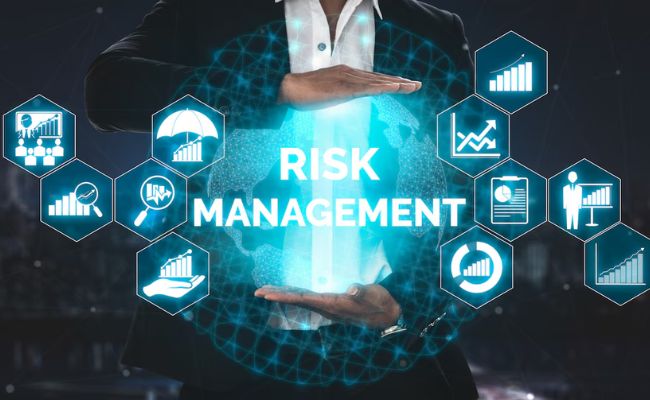Introduction: The Rising Tide of Compliance Risk
With global regulations tightening and public scrutiny intensifying, understanding compliance risk in regulated industries is more critical than ever. Regulatory frameworks are no longer static—laws evolve fast, and failing to comply can cost companies millions and damage reputations beyond repair.
What Triggers Compliance Risk?
Key Drivers
- Regulatory Changes: Laws shift frequently, especially around data, finance, and sustainability.
- Internal Gaps: Poor training, outdated policies, or disjointed systems.
- External Pressures: Cyber threats, third-party misconduct, and geopolitical events.
The Hidden Costs of Non-Compliance
While penalties grab headlines, hidden costs like:
- Operational delays
- Loss of trust from clients and investors
- Decreased employee morale
…can silently erode an organization from within.
Strategic Compliance Planning
A robust compliance plan includes:
1. Regulatory Mapping – Understand the rules you must follow.
2. Gap Analysis – Identify what’s missing in your current setup.
3. Action Plan – Assign responsibilities, timelines, and tools.
Embedding Compliance into Corporate DNA
Culture Over Checklists
When compliance becomes a shared value—not just a task—organizations thrive. Promote transparency, ethical decision-making, and accountability at every level.
Must-Have Tools for Compliance Teams
Equip your teams with:
- Policy Management Platforms
- Risk Registers
- Automated Alerts
- Compliance Dashboards
These tools help track obligations, flag risks, and centralize documentation.
The Role of Leadership in Compliance
Leaders must “walk the talk.” When executives prioritize compliance, it sends a strong message across the organization. Budget allocation, training mandates, and visibility of compliance functions all start at the top.
How Small Businesses Can Stay Compliant
Even with limited resources, SMBs can:
- Use free compliance checklists and open-source policy templates
- Invest in basic LMS (Learning Management Systems) for training
- Engage outsourced compliance consultants periodically
Regulatory Forecast 2025
Expect growth in:
- ESG (Environmental, Social, Governance) regulations
- Cybersecurity frameworks
- Cross-border data transfer laws
Staying ahead means adapting now.
Integrating ESG into Compliance Strategy
Today, ESG isn’t just nice to have—it’s a compliance requirement in many sectors. Align your governance strategies to include environmental risks and social responsibility.
Cybersecurity & Compliance
Protecting data is now a compliance mandate. Implement:
- Data encryption protocols
- Access controls
- Regular penetration testing
These help meet GDPR, HIPAA, and other global standards.
Policy Management Best Practices
Effective policy management means:
- Clear, jargon-free documentation
- Easy access via digital repositories
- Regular reviews and updates
Monitoring and Reporting Mechanisms
Build real-time visibility into compliance through:
- KPI dashboards
- Incident reporting systems
- Internal and external audit trails
Training for Impact
Move beyond dull training. Use:
- Microlearning modules
- Gamification
- Scenario-based simulations
These help employees retain and apply compliance knowledge.
Measuring Compliance Program Success
Track metrics like:
- Policy violation frequency
- Audit score improvement
- Employee training completion rates
- Incident response times
Creating a Culture of Continuous Improvement
Benchmark against top-performing companies. Regularly review compliance programs and solicit employee feedback to keep improving.
FAQs
1. Why is compliance risk growing?
Due to global regulation expansion, data protection, and increased enforcement activity.
2. How can small companies afford compliance?
Use affordable tools, outsource selectively, and train your team with online resources.
3. What is ESG compliance?
It refers to aligning environmental, social, and governance practices with regulatory expectations.
4. Why involve leadership?
Executives influence culture, budget, and priorities—making compliance sustainable.
5. How often should policies be updated?
At least annually, or whenever new laws emerge.
6. Can automation help?
Yes. Tools streamline tracking, reporting, and alerting for compliance-related activities.
Conclusion
Compliance risk doesn’t have to be a burden. With the right mindset, tools, and team commitment, organizations can turn it into a strength. A proactive compliance approach not only protects your company—it enhances its credibility and future readiness.
🎓 Explore Best Online Courses to Learn Risk Management
If you’re new to risk management or looking to deepen your expertise, there’s no better time to start than now. Learning from industry experts can help you build a strong foundation and gain certifications that set you apart in the job market.
At www.smartonlinecourse.com, in collaboration with the Risk Management Association of India (www.rmaindia.org), you can explore a range of self-paced, affordable online courses designed for both beginners and professionals. These courses are tailored to real-world needs, taught by experts, and designed for flexible learning.
👉 Visit www.smartonlinecourse.com to explore more!
📧 Email: info@smartonlinecourse.org
Or WhatsApp us at: 8232083010/9883398055


